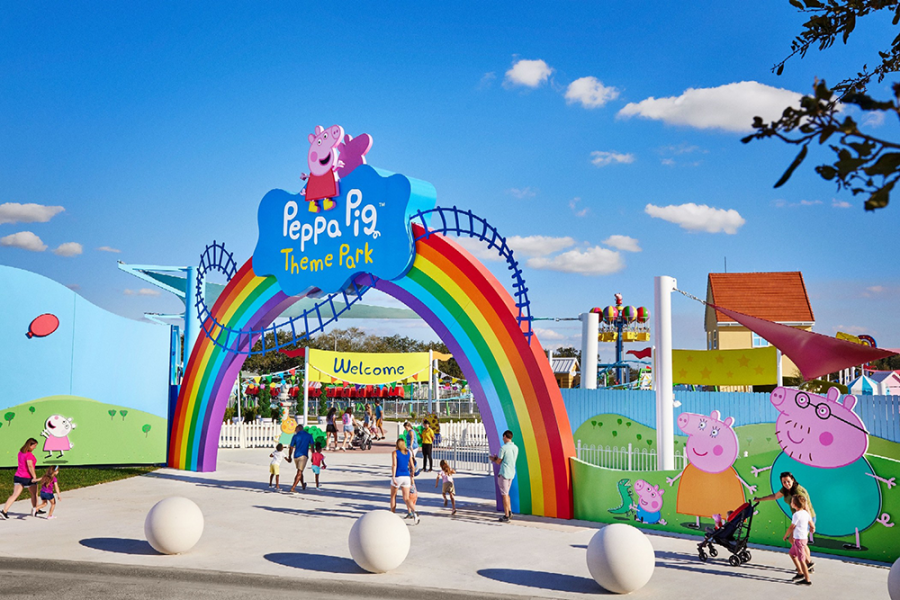Overcoming the Supply Chain Crunch
The global attractions industry has struggled the last few years with the overwhelming effects of shutdowns and restrictions in response to the spread of COVID-19. Attendance, operations, staffing, and finances have been substantially affected. But as industry manufacturers and suppliers (M&S) looked forward to resuming their projects and embarking on the revival of operations, few foresaw the current massive impact of serious supply chain issues on their recoveries.
Phil Wilson, chief development officer at Extreme Engineering in Athens, Texas, summarizes just what the M&S segment is facing: “The post pandemic climate certainly has caused supply chain issues—everything from huge price increases on steel, to fuel prices pushing shipping [costs] up 10 times over 2019 rates, to massive delays at the ports. While attractions have had the opportunity to be open for almost two years, M&S has just started the road to recovery.”
In this climate, Barton Malow, headquartered in Southfield, Michigan, served as the general contractor for the new Peppa Pig Theme Park at Legoland Florida Resort in Winter Haven. The park, operated by Merlin Entertainments in Poole, Dorset, England, opened February 2022 and features six interactive rides, six theme playgrounds, and a water play area. But making it happen was a harsh test for Barton Marlow.
“The biggest challenge due to supply chain issues was tracking the material and getting an accurate delivery date,” says Loren Luedeman, project executive at Barton Malow. “Lead times at some points have more than doubled due to supply chain challenges.” On the Peppa Pig Theme Park, Luedeman says the company responded by securing alternate materials or resequencing its work to accommodate delayed deliveries.

For a supplier of attractions, delays may result in the loss of clients, as Scott Lundmark, president of Adventure Golf & Sports in Traverse City, Michigan, explains: “The biggest problem with supply chain issues is planning for lead times and, in turn, servicing clients’ needs in a timely fashion. Additionally, replenishing inventories is taking more time as well and, therefore, can put deals at risk with clients who need quick turnarounds.” He adds that port delays are causing increased lead times for company products and raw materials.
It’s not just delays that are wreaking havoc, but rapidly increasing inflation, and that means higher prices for manufacturers, suppliers, attractions, and, finally, guests.
“Yes, absolutely, we have to pass price increases onto our end customers,” says Lundmark. “We don’t like to but are forced in order to maintain a reasonable margin [for] positive cash flow. The same thing is happening to us with our supplier network; they’re increasing pricing while lead times grow, and they pass increased shipping costs to us—a domino effect.”
Another quandary for suppliers is that the long lead time on many projects makes it virtually impossible to give accurate pricing when inflation costs are increasing so rapidly.
“Some projects take six months to over a year,” says Wilson. “Complex projects don’t enter the material phase until toward final stages of the project, putting suppliers at risk with maintaining profit margins to break even.”
He adds that it’s “incredibly difficult” to honor pricing on projects that take over a year to achieve. He says attractions need to be open to these challenges and support suppliers as they deal with constant pricing hurdles.
For countless decades, the signature attraction at amusement parks has been the roller coaster. But the current supply problems are making for a rough ride for coaster manufacturers and suppliers.
“Roller coasters are generally very complex installations,” says Torsten Schmidt, director of business development for Maurer Rides, based in Munich, Germany. “As supply chain disruptions have an impact, we are particularly aware that some component suppliers are no longer able to respond to inquiries or even make promises regarding delivery dates. In addition, due to the lack of supply, prices have increased massively in some cases.”
Schmidt notes that this isn’t a problem just for new ride installations, but also for servicing existing rides.
“If something fails in service, it can quickly become critical,” he says. “We try to always have certain components in stock so we can help our customers quickly and without problems. But the situation is getting worse and worse. We therefore recommend our customers stock certain components themselves in good supply so there are no long downtimes during the season.”
He says Maurer clients also have the option of arranging their own transport so they have more control over delivery times and shipping costs. Plus, Maurer is ordering components earlier and increasing its inventory. The company is also encouraging clients to commission their projects earlier.
Others have made adjustments as well. Luedeman says Barton Malow created a “Lead Time for Equipment/Materials” tracker that’s updated daily with new information on what’s occurring across the industry. Adventure Golf & Sports is requesting more project-timing leeway from clients, carrying higher inventories, and improving the logistics of its installation crews.
At Extreme Engineering, Wilson says his company is “cocreating and partnering” with other industry suppliers. He notes that competition still exists, but supporting each other on projects that can use all of the suppliers’ talents is how they’ll all survive and thrive through the current climate.
“I believe our constituency will need to put guards down more than ever and be creative in partnering with others,” he says. “I believe it could be the new culture to move us forward. It would allow us to support the protection of company ideas, team with outside leaders and not try to recruit them for our personal benefit, collectively negotiate with supply chains to save money, refer reliable resources, and give each other work where it’s needed. It’s easier said than done, but I have to believe this is where our industry is headed. I believe a more collective, supportive community in our industry can quickly bring positive change in a very huge way.”
